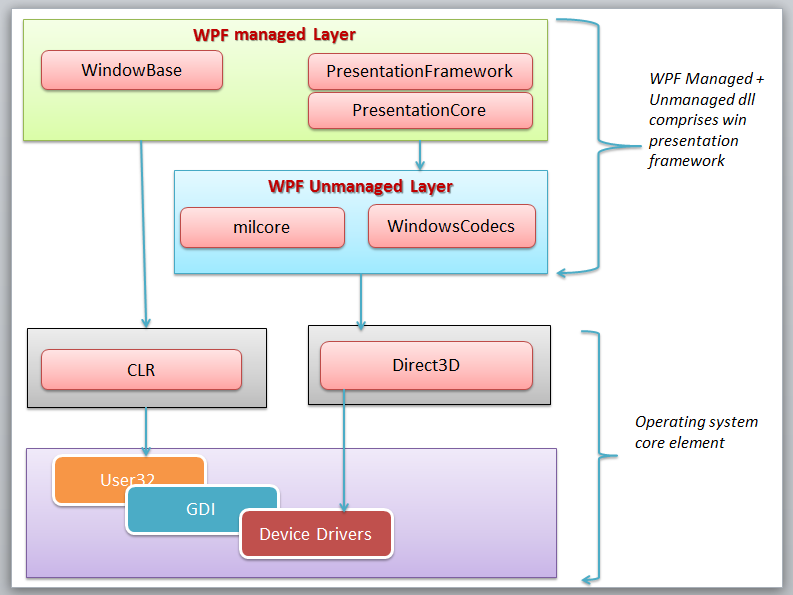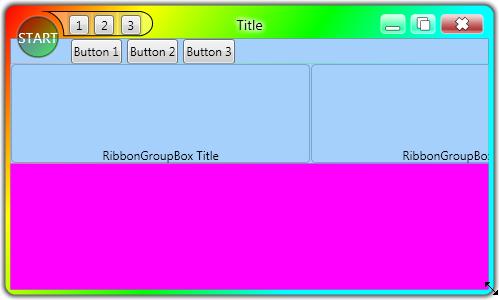Wpf Paint Program Code


RodStephens,I would like to know how I can do that when drawing lines in runtime using the MouseDown (e.Location) and MouseUp (e.Location) events, when tracing the lines they start exactly at the endpoint of the previous line, when I try to do this the start of the line is not exactly at the point. I would like to have a method that when the mouse pointer is near a point it is drawn towards the point so that my lines are exactly where I want it and the desired length.I am programming in C #.Thank you in advance.M.Liranzo.
Wpf Polygon
Sometime in the past, a friend asked me how to update a control to show status while his code is doing a loop of stuff. Essentially changing the text of a label (or sophisticatedly we can say a text-based progress bar). In my past coding with MFC and WinForms, it's fairly easy enough, you just invalidate and do an update (Invalidate / UpdateWindow in MFC or Invalidate / Update in WinForms). This approach also coincides with how Windows UI operate, where you specify the region that needs to be redrawn and then you send a message to the message pump for that control to paint itself.So, I expected something similar (if not exactly the same) to also be present in WPF; much to my surprise, there is no equivalent. All my internet searches actually shows how to do this using background thread - it is the approach that needs to be taken in a proper programming context, however there are times when you just want to do something quick & dirty or you want to augment an existing app / port where you don't want to introduce new elements. There are also considerations to be made when both UI and worker thread access the same data, especially with regard to data binding (see about collection change not supporting multi-threading out of the box).So, I've decided to add a helper method to refresh a WPF control.
I really appreciated the Refresh method in WinForms (which executes both Invalidate & Update), so I'm renaming my method to be Refresh as well. The code snippet below also show some C# specific techniques, namely: anonymous delegates and extension methods.public static class ExtensionMethods. The LoopingMethod is just the method I use in my Window class to update the label (updating the progress) and then the code does some heavy lifting (Sleep ). The Refresh method is the extension method that takes any UI element and then calls that UIElement's Dispatcher's Invoke method. The trick is to call the Invoke method with DispatcherPriority of Render or lower. Since we don't want to do anything, I created an empty delegate. So how come this achieves refresh functionality?When the DispatcherPriority is set to Render (or lower), the code will then execute all operations that are of that priority or higher.
In the example, the code already sets label1.Content to something else, which will result in a render operation. So by calling Dispatcher.Invoke, the code essentially asks the system to execute all operations that are Render or higher priority, thus the control will then render itself (drawing the new content). Alan clark barbarossa pdf. Afterwards, it will then execute the provided delegate (which is our empty method).Pretty weird; there was a post somewhere in my google search that led me this route, and I was surprised as to how it worked. I couldn't find it anymore, but credit where credit is due, someone else figured out that Invoke-ing a Render or lower priority task will result in the UI being redrawn.Update (January 20, 2009):A Commenter asked for a full sample, so I've uploaded one.
Give More Feedback

I don't speak Spanish, but was working great!Update (February 26, 2009):A Commenter asked for a VB.NET sample, so I've uploaded one.Update (January 13, 2010):Apparently doesn't allow linking non-image files (thus the samples link doesn't work anymore). Samples are now being put in. C# sample and VB.NET sample.Posted on Monday, August 25, 2008 10:22 AM,. @MrK:Please leave an email next time; it's easier than corresponding via comments.From my simple test, there are some possibilities as to why it doesn't work for you:1.
I created a TabControl and have the TabItems in the XAML; with this scenario, MoveCurrentTo does not change the selected tab; if I call TabControl1.SelectedItem = TabControl1.Items1 (to set it to the second item) then do TabControl1.Refresh, it works.2. If I created the tabitems in code and put them in a CollectionView, then MoveCurrentTo will also change the SelectedItem (tab) and.Refresh will also work.3. If you're using Windows 7 (don't know about Vista), I have to change the DispatcherPriority to Input (or lower) before it'll work. To Xcalibur:The post discusses a way to manually force a refresh on a UIElement, given that the busy-code is running on the same thread as the UI Dispatcher thread.In Windows development, regardless of programming platform, to update a UI first you invalidate it, which means a WMPAINT is sent over so the control can draw itself. If you're running in a single thread, there's no way to force that WMPAINT processing in WPF (in Win32 API, usually we would call SendMessage, rather than PostMessage).In WPF development methodology, the way to handle this correctly is to have the busy-code in a separate thread - which is the proper thing to do.
However, every now and then, especially with small projects, you don't want the hassle of creating a worker thread - thus this Refresh extension method fits that bill.